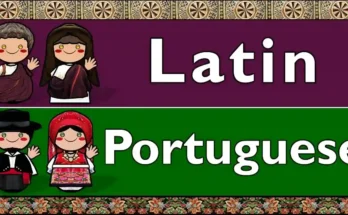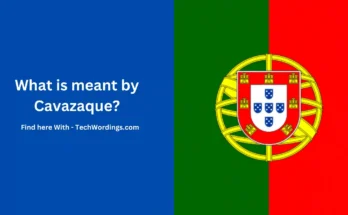In the linguistic tapestry of the Spanish language, certain words hold a captivating charm, offering layers of meaning that stretch far beyond their literal translations. One such enigmatic term that beckons exploration is “divijos.” At first glance, it may appear as a simple word, but delving into its diverse contexts reveals a richness that extends from administrative landscapes to the realms of aesthetics, spirituality, and popular culture.
This article embarks on a journey to unravel the intricate tapestry of “divijos,” shedding light on its various interpretations and applications across different facets of the Spanish-speaking world. From serving as a descriptor for administrative divisions to encapsulating the divine essence of beauty and perfection, “divijos” proves to be a linguistic gem with a story as multifaceted as its meanings. Join us in decoding the allure of “divijos” as we navigate through its usage in diverse contexts, each unveiling a unique facet of its captivating charm.
Divijos as Administrative Divisions
In the vast expanse of Spanish-speaking Latin American countries, the term “divijos” takes on a distinct role when discussing administrative divisions within a nation. Originating from the root word “division,” it gracefully weaves into the fabric of governance, encapsulating the delineation of states, provinces, or departments.
A. Definition and Origin
“Divijos” traces its roots to the broader term “división,” a word deeply embedded in the administrative structures of nations. This Spanish term, which literally translates to “divisions,” carries the weight of organizational intricacies within a country.
B. Usage in Spanish-speaking Latin American Countries
Across the diverse landscapes of Latin America, “divijos” finds resonance in conversations about the administrative subdivisions that shape a nation. Whether discussing the distinct states in Mexico, the provinces in Argentina, or the departments in Colombia, “divijos” becomes a linguistic marker, encapsulating the essence of administrative order.
C. Examples of Administrative Divisions Referred to as “Divijos”
For instance, in the mosaic of the United States, where the administrative map is delineated into 50 states, the term “divijos” seamlessly integrates into the Spanish lexicon. One might hear phrases such as “Los Estados Unidos tiene 50 divijos” (The United States has 50 divisions), underscoring the versatile application of the term.
As we navigate the linguistic landscape, “divijos” not only mirrors the administrative divisions on a map but also captures the essence of unity within diversity, echoing the unique cultural and historical tapestry of each region. The next juncture in our exploration unveils the military connotations of “divijos” in the context of Spain.
Divijos in the Military Context
Beyond its administrative connotations, “divijos” extends its linguistic reach into the disciplined echelons of the military in Spanish-speaking regions. In the context of Spain, this term assumes a role in describing the structured and hierarchical divisions within the armed forces, weaving together a narrative of regimentation and strategic organization.
A. Application to Military Divisions in Spain
Within the Spanish military apparatus, “divijos” takes on a specific meaning, designating various levels of military divisions, including regiments, brigades, and larger organizational units. This military application showcases the adaptability of the term, seamlessly transitioning from administrative realms to the disciplined order of the armed forces.
B. Explanation of How the Term is Used for Regiments, Brigades, etc.
In military parlance, regiments and brigades form the backbone of strategic organization, each contributing to the overall readiness and effectiveness of the armed forces. When Spanish-speaking military personnel discuss these organizational units, the term “divijos” becomes a linguistic shorthand, encapsulating the structured divisions that ensure operational efficiency.
C. Overview of the Organizational Structure and Divisions within the Spanish Army
To comprehend the full scope of “divijos” in the military context, it’s essential to grasp the intricate organizational structure of the Spanish Army. With 13 divisions comprising regiments, brigades, and specialized units, each “divijo” plays a crucial role in maintaining the armed forces’ readiness and effectiveness.
As we traverse the disciplined landscape of military divisions, the linguistic versatility of “divijos” becomes apparent. From administrative order to military precision, this term transcends its literal translation, offering a nuanced perspective on the structured layers that define the armed forces. The journey continues as we explore the divine essence of “divijos” in the next section.
The Divine Essence of Divijos
Stepping beyond the realms of governance and military precision, “divijos” undergoes a transformative shift, now donning the mantle of the divine. In this section, we explore how this seemingly ordinary term transcends the earthly and takes flight into the realms of spirituality, aesthetics, and the sublime.
A. Transition to the Spiritual or Aesthetic Meaning
The evolution of “divijos” from administrative and military contexts to the divine is a linguistic metamorphosis that captures the essence of something beyond the tangible. This transition introduces a profound dimension, where the term becomes a conduit for expressing beauty, perfection, and the sacred.
B. Exploration of How “Divijos” Denotes Something Divine, Beautiful, or Perfect
In the tapestry of the Spanish language, “divijos” assumes a sacred aura, referring to something or someone that embodies divine qualities. Whether describing a breathtaking landscape, a work of art, or an individual’s extraordinary qualities, “divijos” becomes a linguistic vessel, carrying with it the weight of admiration and reverence.
C. Examples of Religious and Aesthetic Contexts Where the Term is Applied
Consider a majestic sunset painted across the horizon. In Spanish, one might aptly declare, “La puesta de sol es divija” (The sunset is divine), encapsulating not only the visual beauty but also the spiritual and aesthetic resonance of the moment. Similarly, in religious contexts, the term can be employed to describe sacred spaces, rituals, or individuals regarded as divine.
As we immerse ourselves in the ethereal connotations of “divijos,” it becomes evident that this term serves as a linguistic bridge, connecting the tangible and the transcendent. The journey through its multifaceted meanings continues as we delve into the intersection of “divijos” with popular culture in the next section.
Pop Culture and Divijos
The allure of “divijos” extends beyond the realms of governance, military precision, and the divine, permeating the vibrant landscapes of popular culture. In this segment, we embark on a journey through the lens of entertainment, exploring how “divijos” transforms into a descriptor for fictional characters, particularly those celebrated for their exceptional attractiveness and popularity.
A. Introduction to the Usage of “Divijos” in Popular Culture
Within the realm of popular culture, language often takes on dynamic shifts, adapting to the ever-changing currents of trends and influences. “Divijos” becomes a linguistic brushstroke in this canvas, painting portraits of characters from anime and other fictional mediums that captivate audiences with their charisma and allure.
B. Application to Fictional Characters, Especially in Anime
Anime, with its kaleidoscope of characters, offers a fertile ground for the emergence of terms like “divijos.” These characters, whether possessing extraordinary beauty, unique powers, or compelling storylines, become the embodiments of the term. An anime character may be hailed as “divine” if their attractiveness or popularity transcends the boundaries of the animated world.
C. Examples and Illustrations of How the Term is Used in this Context
Imagine a TikTok video featuring a compilation of clips showcasing anime characters celebrated for their charm and appeal. Viewers may comment on the video, describing these characters as “divijos,” acknowledging not just their visual aesthetics but also their cultural impact and popularity within the fan community.
In the mosaic of popular culture, “divijos” becomes a testament to the transcendent allure of fictional characters, serving as a linguistic badge of honor for those who capture hearts and imaginations. As we continue our linguistic exploration, the informal usage of “divijos” in everyday life emerges as a testament to its versatility.
Everyday Informal Usage of divijos
Beyond the structured domains of governance, military precision, divine aesthetics, and the realms of popular culture, “divijos” seamlessly infiltrates the everyday tapestry of informal language. In this section, we unravel how this versatile term, with its various shades of meaning, becomes a colloquial expression to laud the simple yet extraordinary moments of life.
A. Informal Usage to Describe Something Exceptionally Good or Nice
In the ebb and flow of daily conversations, “divijos” assumes a role akin to a linguistic pat on the back, a nod of approval for something remarkably good or nice. It becomes a casual yet powerful descriptor, elevating the mundane to the extraordinary.
B. Examples in Daily Life, Such as Praising Food or Experiences as “Divijos”
Consider a delightful culinary experience—a flavorful dish that tantalizes the taste buds. In Spanish-speaking circles, one might express their culinary delight by exclaiming, “¡Esta comida está diviosa!” (This food is divine!), encapsulating not just the palatable delight but the sheer joy and satisfaction derived from the experience.
Similarly, everyday occurrences, from a heartwarming encounter to an exceptionally enjoyable outing, can be casually adorned with the term. The colloquial usage of “divijos” paints life’s moments with strokes of positivity and appreciation.
C. Connection to the Misspelling of “Divino” and Its Implications
The informal usage of “divijos” also opens a linguistic doorway to the misspelling of its root word “divino,” which translates to “divine.” This connection further emphasizes the inherent warmth and affability encapsulated by the term, reinforcing its informal charm.
Amid casual banter, expressions of approval, and everyday interactions, “divijos” becomes a linguistic companion, weaving itself into the fabric of informal conversations, enriching the tapestry of everyday language. As we near the conclusion of our exploration, a clarification is due regarding the term’s correct usage in the broader spectrum of divisions, be they administrative, military, or organizational.
Divijos vs. Divisions
As we traverse the intricate landscape of the term “divijos,” it is crucial to illuminate a distinction that may occasionally be obscured—the difference between “divijos” and its English counterpart, “divisions.” In this section, we clarify the nuances of the term, encompassing its correct usage in various contexts, from administrative delineations to military formations, business structures, and organizational frameworks.
A. Clarification of the Misspelling and Its Distinction
First and foremost, it’s imperative to acknowledge that “divijos” is, at times, a linguistic divergence, a playful variation that, while reminiscent of its English counterpart “divisions,” bears a distinct charm and informality. It serves as a linguistic embellishment, offering a colloquial twist to the more structured term.
B. Application in Various Contexts, Including Administrative, Military, Business, and Organizational Divisions
The correct usage of “divijos” aligns with the various facets of divisions that we have explored throughout this journey. From administrative divisions in countries, military regiments and brigades, to business departments and organizational committees, “divijos” proves to be a versatile term that transcends linguistic boundaries.
C. Examples to Highlight the Correct Usage in Different Scenarios
Consider the following examples to crystallize the distinction:
- Administrative Divisions: “El país está dividido en 10 divijos.” (The country is divided into 10 divisions.)
- Military Divisions: “El ejército tiene 13 divijos.” (The army has 13 divisions.)
- Business Divisions: “La empresa tiene 5 divijos.” (The company has 5 divisions.)
- Organizational Divisions: “La organización tiene 3 divijos.” (The organization has 3 divisions.)
In these instances, “divijos” seamlessly integrates into the linguistic landscape, capturing the essence of each specific context while retaining its distinctive, informal flair.
As we near the conclusion of our exploration, let’s recap the diverse meanings and contexts of “divijos,” appreciating its richness and versatility across administrative, military, aesthetic, and everyday realms. The allure of this term lies in its ability to bridge the formal and the informal, inviting individuals into a linguistic dance that transcends traditional boundaries.
Conclusion
In the tapestry of language, certain words weave narratives that transcend the ordinary, inviting us into realms where meanings diverge, converge, and transform. “Divijos,” a seemingly unassuming term, unfolds into a linguistic marvel—a chameleon that seamlessly adapts to diverse contexts, offering a kaleidoscopic view of meanings and applications.
From the administrative divisions that carve nations into states and provinces to the disciplined order within the military’s regiments and brigades, “divijos” stands as a versatile descriptor. It gracefully transitions into the spiritual and aesthetic, becoming a conduit for the divine, the beautiful, and the perfect.
Venturing further, “divijos” paints the vibrant hues of popular culture, adorning fictional characters in anime with a title that encapsulates their allure. It finds a comfortable spot in everyday conversations, bestowing warmth upon experiences and expressions of approval. Yet, amid its informal charm, “divijos” maintains a distinction from its English counterpart, “divisions,” grounding itself in the correct usage across administrative, military, business, and organizational landscapes.
As we conclude this journey of decoding the multifaceted meaning of “divijos,” let us marvel at the allure of this term. It is more than just a word; it is a bridge that connects the mundane to the extraordinary, the formal to the informal. It invites us to explore the richness and versatility embedded in language, reminding us that within the nuances of words lies a world waiting to be discovered, appreciated, and embraced. So, as we navigate our linguistic landscape, may “divijos” continue to captivate our minds and hearts, inviting us into the delightful dance of meanings that transcends boundaries and enriches our understanding of the ever-evolving tapestry of language.



